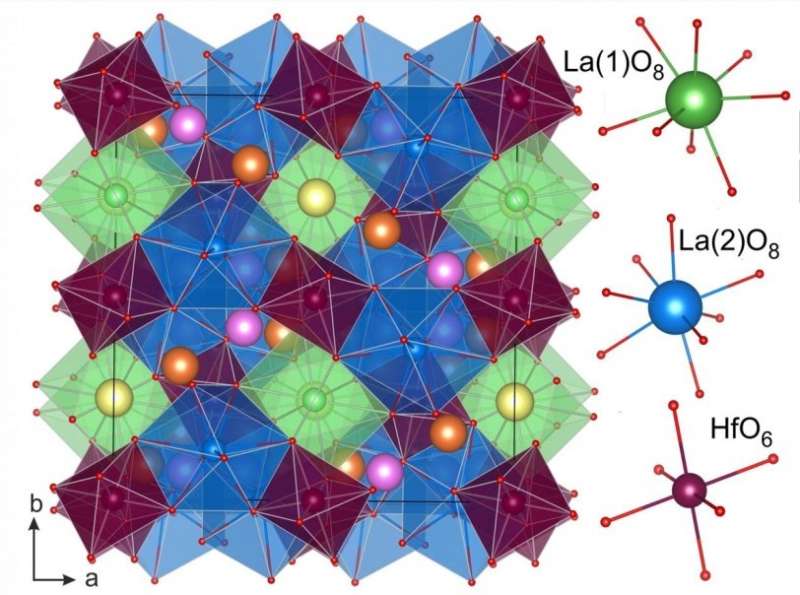Scientists synthesize a new phosphor

Chemists and physicists from Ural Federal University and Institute of Chemistry of Solids of the Ural Branch of Russian Academy of Sciences have synthesized a new compound that may be used to convert UV radiation into visible light and change laser radiation range. The work was published in the Journal of Luminescence.
The article authors worked with lithium-containing compounds with garnet structure. The chemical formula of such compositions is LixLa3M2O12, where M is zirconium, niobium, tin, tellurium, hafnium, or tantalum and x equals three to seven. A number of publications about materials based on these systems have been published lately. However, their optical properties remained understudied.
From previous publications, chemists knew that many hafnium compounds had photo-, X-ray-, and radioluminescence. Thus, cerium-doped hafnium garnet Ca3Hf2SiAlO12 phosphor shows a broad cyan emission under 400 nm excitation (on the border between visible and UV radiation). The authors of the work decided to synthesize lithium-containing cerium-doped hafnium garnet (Li7La3Hf2O12:Ce3+) to obtain one more composition that emits in the visible spectrum.
After synthesizing the necessary compounds, the chemists studied its properties. Using X-ray diffraction, they determined the compound's structural characteristics. They studied its microstructure using scanning electron microscopy. To determine the relationship between reflection, excitation and luminescence spectra on the dopant concentration and temperature, the chemists carried out a complex analysis of optical spectroscopy. They found a correlation between separate emission bands and F+ centers.
"After detailed analysis of all obtained characteristics and using EPR spectroscopy, we managed to prove that the increase of cerium concentration led to the reduction in the intensity of photoluminescence associated with intrinsic luminescence centers in Li7La3Hf2O12 represented by excitons (quasiparticles as bound states of electron and hole) in regular crystal lattice nods (Hf-O)," said Yana Baklanova, a co-author of the article, and senior scientific associate of Institute of Chemistry of Solids of Ural Branch of Russian Academy of Sciences.
The compound, with other dopants, may be used in the manufacture of medical and optic devices and monitoring systems,
"A Li7La3Hf2O12 compound doped with europium and neodymum or holmium (Eu3+ and Nd3+/Ho3+) may by used to convert UV radiation into the visible spectral range and monochromatic laser radiation into the infrared range with shortwave- and middle-infrared spectral range. IR radiation is widely used in medicine, various optical systems, and also for air pollution analysis," concluded Alexey Ishchenko, a co-author of the article, assistant professor and senior scientific associate of Ural Federal University.
Provided by Ural Federal University



















